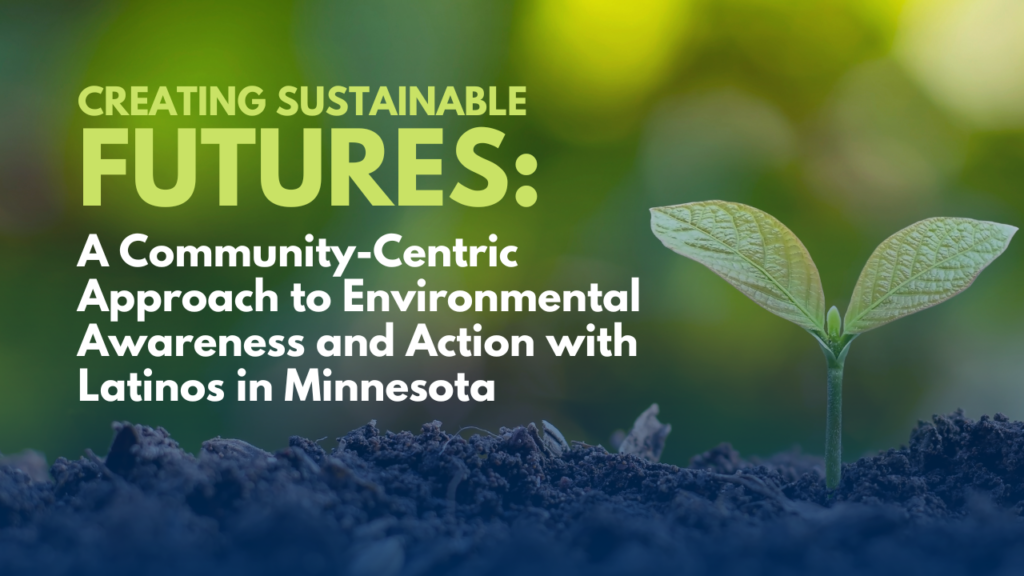
Introduction
Overview of HACER’s Study
This study emerges from the findings gathered in a recent HACER investigation, Perceptions of climate change in Latino Minnesotans, highlighting substantial concerns within the Latino community in Minnesota regarding the immediate and future impacts of climate change. Notably, the investigation revealed that Spanish-speaking participants had no previous knowledge of climate action efforts during that study, indicating a notable lack of accessible information.
In response, this study attempts to engage the Latino community in the Twin Cities and Southern Minnesota in a series of environmental activities. The study has a dual focus, aiming to foster sustainable and equitable practices within the Latino community while delving into the specific successes and challenges faced in integrating eco-friendly habits into daily life. By engaging in these activities, this study seeks to understand and promote environmentally conscious behaviors while addressing the informational gaps in the community.
Representation in Climate Action
Literature on equitable representation in the environmental justice movement demonstrates a lack of representation of Black, Indigenous, and People of Color (BIPOC) communities. (Davis and Ramírez- Andreotta, 2021; Kohl, 2020). Drawing from HACER’s previous report, Latinos in Minnesota feel they are not adequately represented in the climate movement due to the lack of reliable information and the limited resources available in Spanish. Environmental solutions frequently overlook individuals who bear a disproportionate burden of environmental injustices, often prioritizing the perspectives of those less affected (Kohl, 2020). Even when these marginalized communities speak up, big corporate lobbying efforts
tend to have more financial and legal power, which often leads to their concerns being overlooked. Consequently, communities living with the impact of environmental pollution are further discouraged from taking action (Davis and Ramirez-Andreotta, 2021).
Additionally, government policies and practices have promoted an unequal playing field that adds more barriers for BIPOC communities to achieve a clean and healthy environment. Case in point, the Minnesota Pollution Control Agency (MPCA) has identified areas of environmental justice concern in the state. These areas encompass communities where over half the population are BIPOC, more than 40% of households earn less than 185% of the federal poverty level, and locations are characterized by elevated air pollution and increased exposure to industries that contribute to environmental degradation (House-MN Health Professionals for a Healthy Climate, 2021). This configuration translates into Minnesotans of Color experiencing a shorter lifespan, higher rates of infant and maternal mortality, and a higher incidence of heart disease, cancer, asthma, diabetes, and other diseases compared to white Minnesotans (House-MN Health Professionals for a Healthy Climate, 2021).
Members of these populations not only encounter environmental risks but also demonstrate greater susceptibility to their consequences. This increased vulnerability, compared to the wider population, arises from several factors, including limited understanding of environmental hazards, exclusion from political processes, and diverse socioeconomic considerations (Institute of Medicine, 1999).
